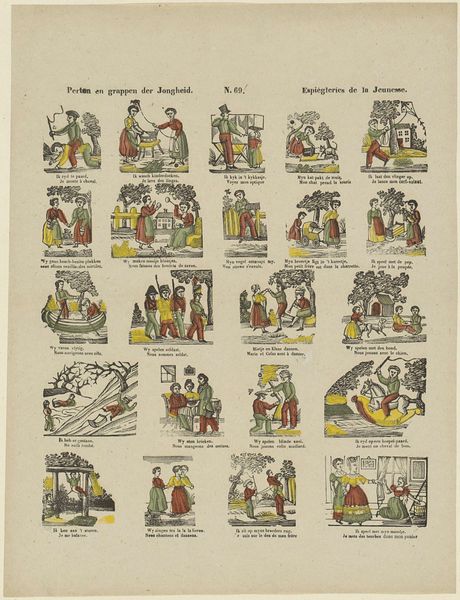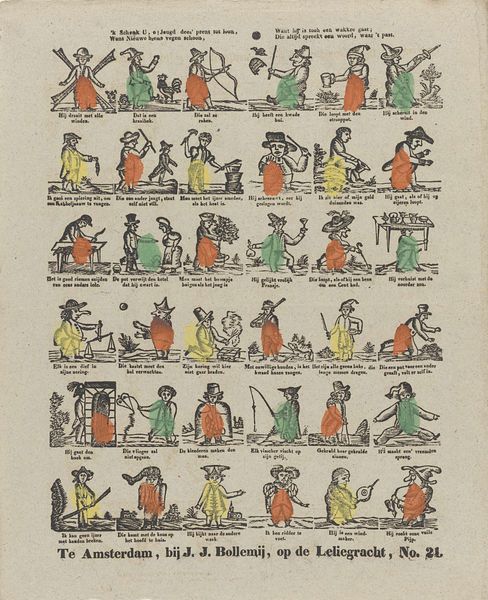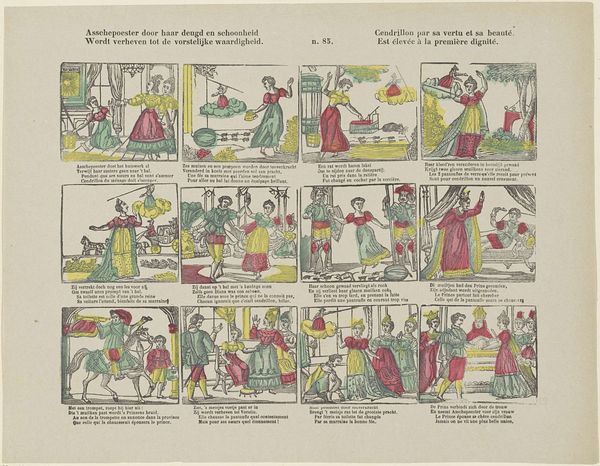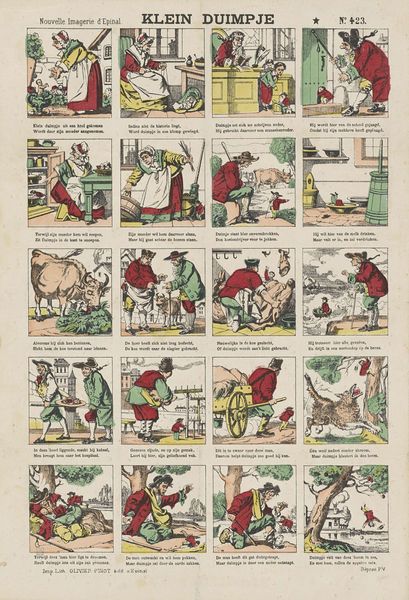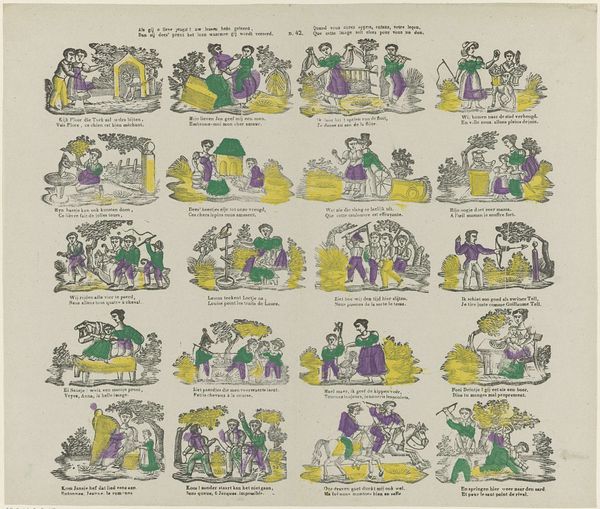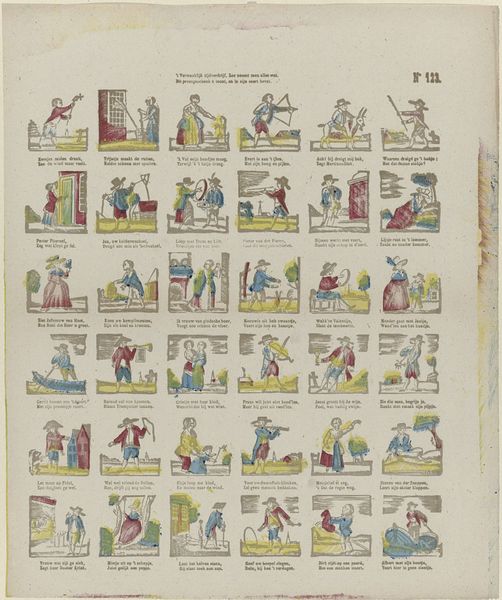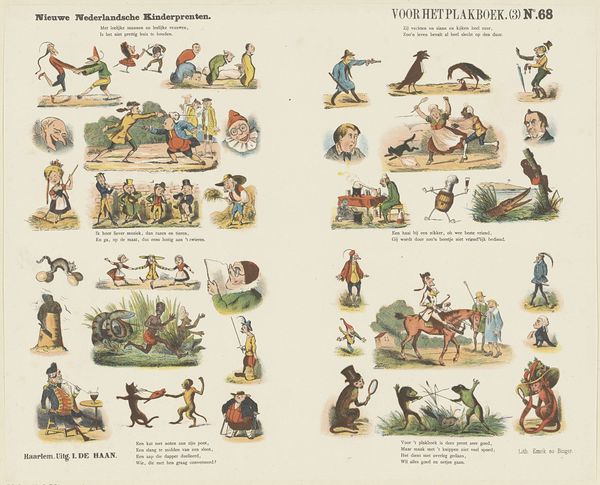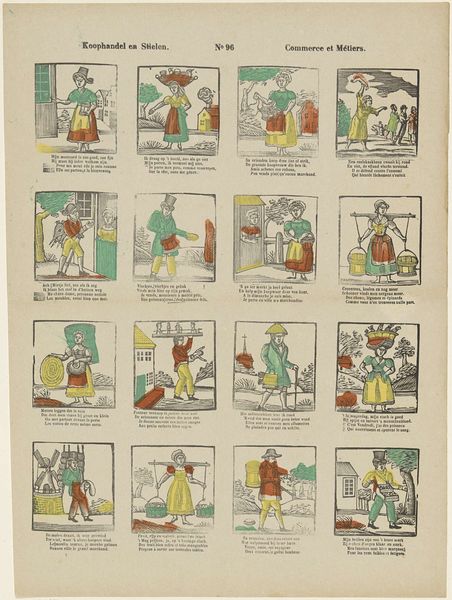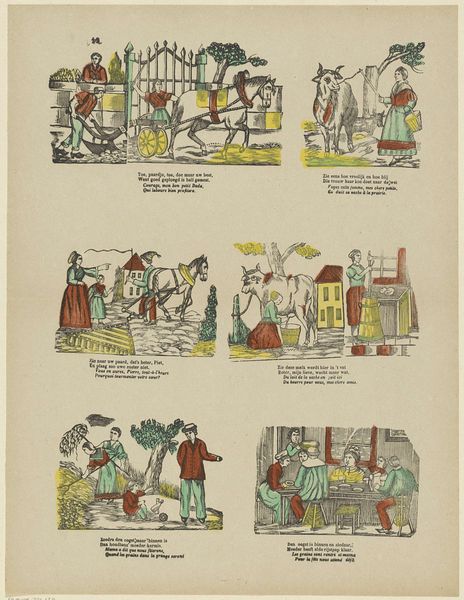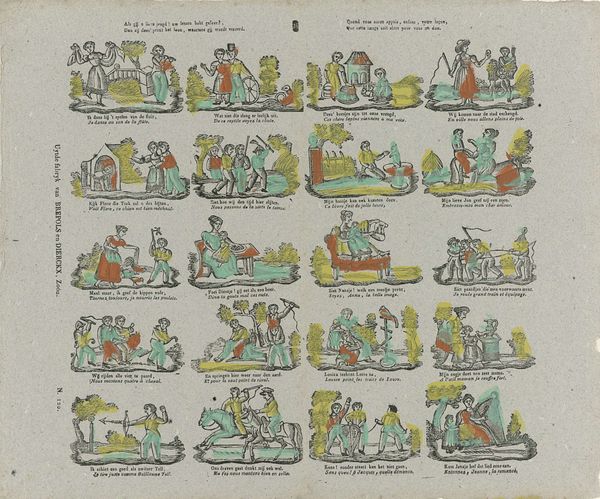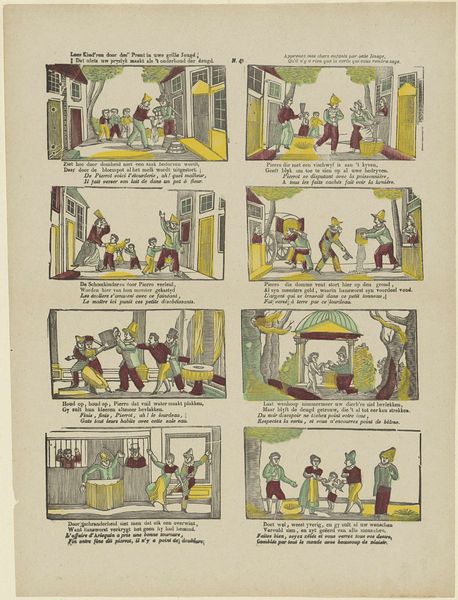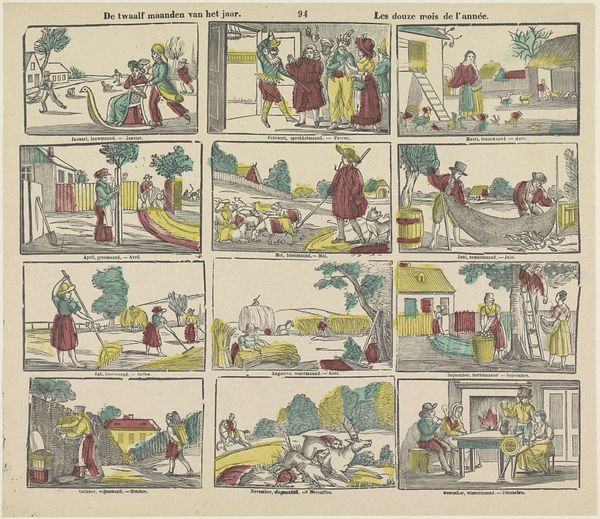
Als gij, o lieve jeugd! uw lessen hebt geleerd, / Dan zij deez' prent het loon, waarmeê gij wordt vereerd / Que vous aurez appris, enfants, votre leçon / Que cette image soit alors pour vous un don 1800 - 1833
0:00
0:00
print, etching
#
narrative-art
#
comic strip
# print
#
etching
#
romanticism
#
comic
#
genre-painting
Dimensions: height 309 mm, width 385 mm
Copyright: Rijks Museum: Open Domain
Curator: Up next is an early 19th-century print titled "Als gij, o lieve jeugd! uw lessen hebt geleerd…", made between 1800 and 1833 by Philippus Jacobus Brepols. What jumps out at you? Editor: It feels like a proto-comic strip. These little vignettes, arranged so neatly…there’s a sense of ordered activity. But it's not precious, it's somehow folksy. Almost as though these images are mass-produced to send a social message or represent daily routines. Curator: Precisely. This etching was likely made as an educational prize for children. The title translates to something like, "If you, dear youth, have learned your lessons, then this print will be the reward with which you are honored." Editor: I like how the colors are simple: green, red, yellow… they're just broadly applied to highlight the clothing, the trees, giving a sense of vibrancy, even in a simple medium like this. It suggests some mechanized system, a process...but where was this made? Curator: Likely the Brepols printmaking workshop, known for its mass production of prints, including those for children. Notice how it juxtaposes images of playful pursuits with those of learning and labor? Editor: I do. Is it arguing that, upon fulfilling societal roles (studying) and laboring, we're allowed or "honored" to play? It definitely reads as a period piece in the representation of women’s and men's social expectations. Curator: Absolutely, it reflects Romantic era values while promoting diligence and reward—both literally and morally— to its young audience. The Dutch and French text further suggests its reach and cultural integration efforts too, wouldn't you say? Editor: Good point. I am curious about its consumption. Did the material itself become a sought-after symbol of class? Curator: I think, beyond pure economics, it signifies aspirations for moral and social refinement during that time. Editor: That makes a lot of sense, a really succinct image for understanding those period aspirations. Curator: A deceptively simple-looking object that offers insight into early educational and societal expectations. Editor: Exactly, it all comes down to its crafting in conjunction with the artist's intentions, and what society did with those efforts, the value placed upon the product.
Comments
No comments
Be the first to comment and join the conversation on the ultimate creative platform.
